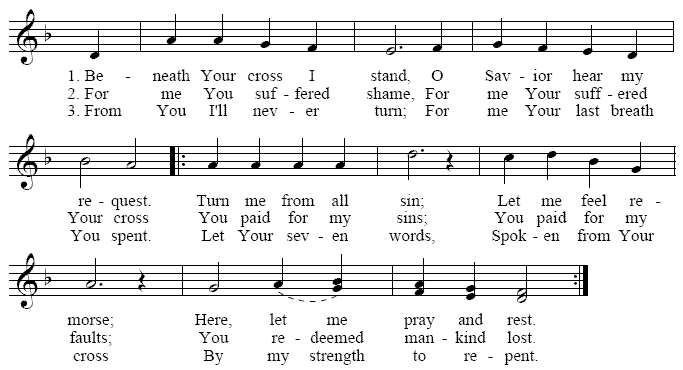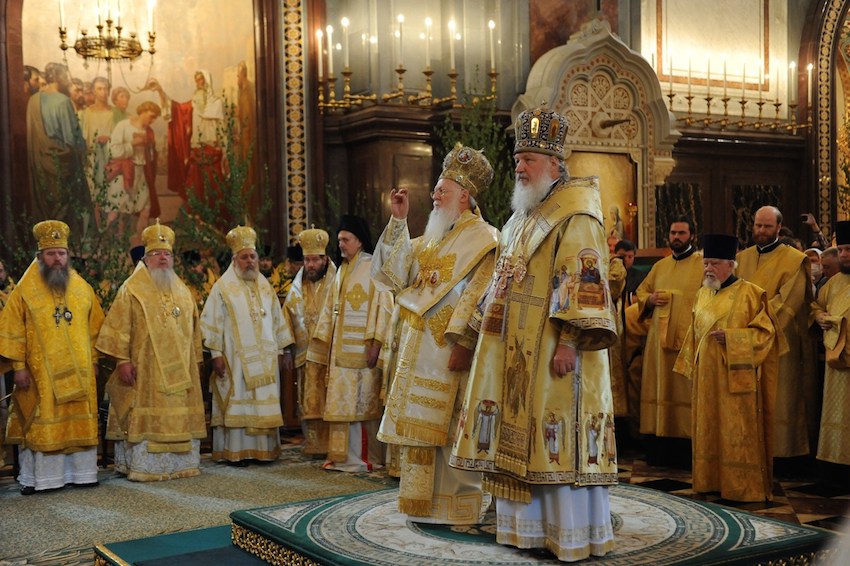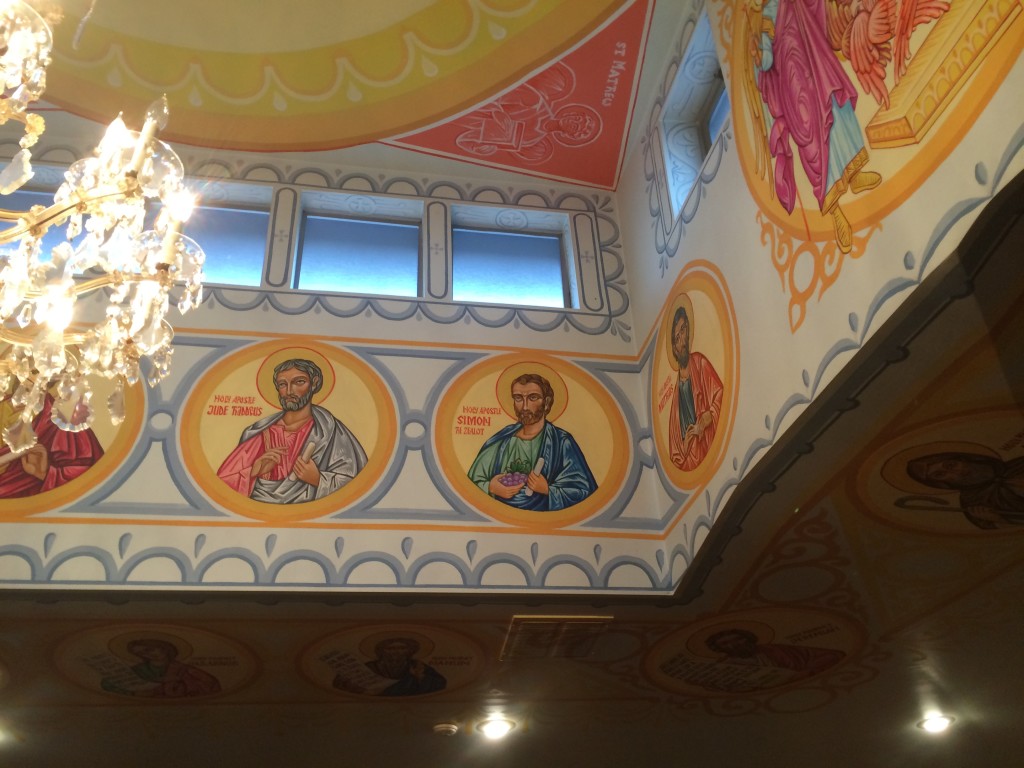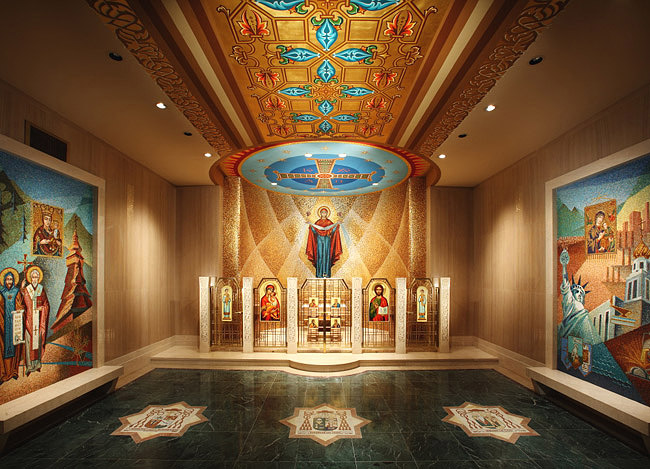My Favourite Byzantine (Ruthenian) Hymn

"We are travellers…not yet in our native land" – St. Augustine

 How does the Eastern perspective on the Church differ from that in the West?
How does the Eastern perspective on the Church differ from that in the West?

I’m winding down for the evening, but I wanted to quickly share something from Divine Liturgy this morning. The Gospel today on the Byzantine Calendar was the healing of the woman with a haemorrhage:
And there was a woman who had had a flow of blood for twelve years, and who had suffered much under many physicians, and had spent all that she had, and was no better but rather grew worse. She had heard the reports about Jesus, and came up behind him in the crowd and touched his garment. For she said, “If I touch even his garments, I shall be made well.” And immediately the hemorrhage ceased; and she felt in her body that she was healed of her disease. – Mark 5:25-29
As I heard the Scriptures proclaimed today I had an epiphany, seeing an Old Testament connection to this passage which I had not previously seen:
And when [the priests] go out into the outer court to the people, they shall put off the garments in which they have been ministering, and lay them in the holy chambers; and they shall put on other garments, lest they communicate holiness to the people with their garments – Ezekiel 44:19
As you can see, in the Old Covenant the garments of the priests where to be kept away from the rest of Israel, but what a wonderful reversal we have with the New Covenant! Jesus, “our Great High Priest”, goes about among His flock, freely available to the people, with His vestments bringing healing and holiness.
There’s a beautiful practice in the Eastern Churches which is inspired by today’s Gospel. I first saw it at my old Ruthenian parish, but I’m told that it’s more common in Melkite and Antiochian churches. As the priest passes along the aisles, you’ll occasionally see members of the congregation reach out and touch the priest’s vestments, made holy not by his own sanctity, but by virtue of the office given to him by Christ through the Church.


I never thought that going to Matins would generate so many blog posts! So…today I sat next to this icon of the Nativity:
In the centre of the icon is Mary the Theotokos, with the infant Christ in a manger, together with some animals (“The ox knows his owner, and the donkey his master’s crib” – Isaiah 1:3). These figures are not in a stable, but in a cave, which reflects the Eastern tradition as well as the practice of the time for keeping animals. Above the cave are the other well-known nativity characters: angels, shepherds, and wise men following the star.
However, what I didn’t understand were the scenes depicted on the bottom-left and bottom-right corners of the icon. In the bottom-left we see St. Joseph sitting by himself with an odd look on his face and in the bottom-right there’s an illustration of what looks to me like an infant baptism taking place. What do these scenes represent?

So a couple of weeks ago at Matins, I looked up into the dome of our church and saw the icon of Simon the Zealot. In the icon, you can see that he’s holding some grapes. Why is this symbol associated with this Apostle?

Fortunately, I recently spent some time with an iconographer and I asked him about their significance. He pointed out that Simon “the Zealot” is also known as Simon “the Canaanite” and that there is a tradition in the East that this Simon was the groom at the wedding in Cana towards the beginning of John’s Gospel. The grapes are a reference to the miracle the Lord performed there, turning water into wine.
With more probability, Baronius, following Nicephorus (Hist. l. 8. c. 30), thinks that the bridegroom at this marriage was the Apostle Simon, who was surnamed the Cananite from Cana.
– Cornelius La pide
The commentator Cornelius then goes on to make a very interesting comment which I think has some interesting implications:
As soon as Simon had seen this miracle of Christ at his wedding, he bade farewell to his bride and the world, and followed Him, and was chosen to be one of His twelve Apostles. This was the reason why Christ came to this wedding; and by coming, indeed, honoured marriage; but by calling him to Himself, He showed that celibacy and the apostolate were better than marriage.
– Cornelius La pide
A while ago I wrote a post talking about the exchanges you’ll commonly hear in the Byzantine circles (e.g. “Glory to Jesus Christ/Glory Forever”). In the Ruthenian Catholic Church you’ll often hear greetings and responses in Slavonic. I couldn’t find anywhere on the Internet to help learn them, so here’s my best attempt to list them all out phonetically and record them onto MP3….

“Slava Isusu Christu” (SLA-VA EE-SUE-SUE KRI-STU)
“Slava na Veeky” (SLA-VA NA VyEE-KEE)
An alternative dialect has it as
“Slava vo V’iki” (SLA-VA VO VyEE-KEE)
“Christos Razhdajetsja” (KRIS-TOS ROZH-DA-YET-SyAH)
“Slaveety Yoho” SLA-VEE-TE YEAH-HO)
“Christos Voskres” (KRIS-TOS VOS-KRES)
“Voistynu Voskres” (VO-EE-STEE-NU VOS-KRES)
An alternative dialect has it as:
“Christos Voskrese” (KRIS-TOS VOS-KRES-E)
“Voistinu Voskrese” (VO-EE-STEE-NU VOS-KRES-E)
“Chrystos Posredi nas” (KRIS-TOS POS-RE-DI NAS)
“I yest i budet” (YEST EE BOO-DET)
I hope this helps! If anyone out there is a Slavonic expert and would like to correct my pronunciation or phonetic spelling, please leave me a comment! Also, if you’d like to teach the world the responses in Greek, Russian etc, please let me know 🙂